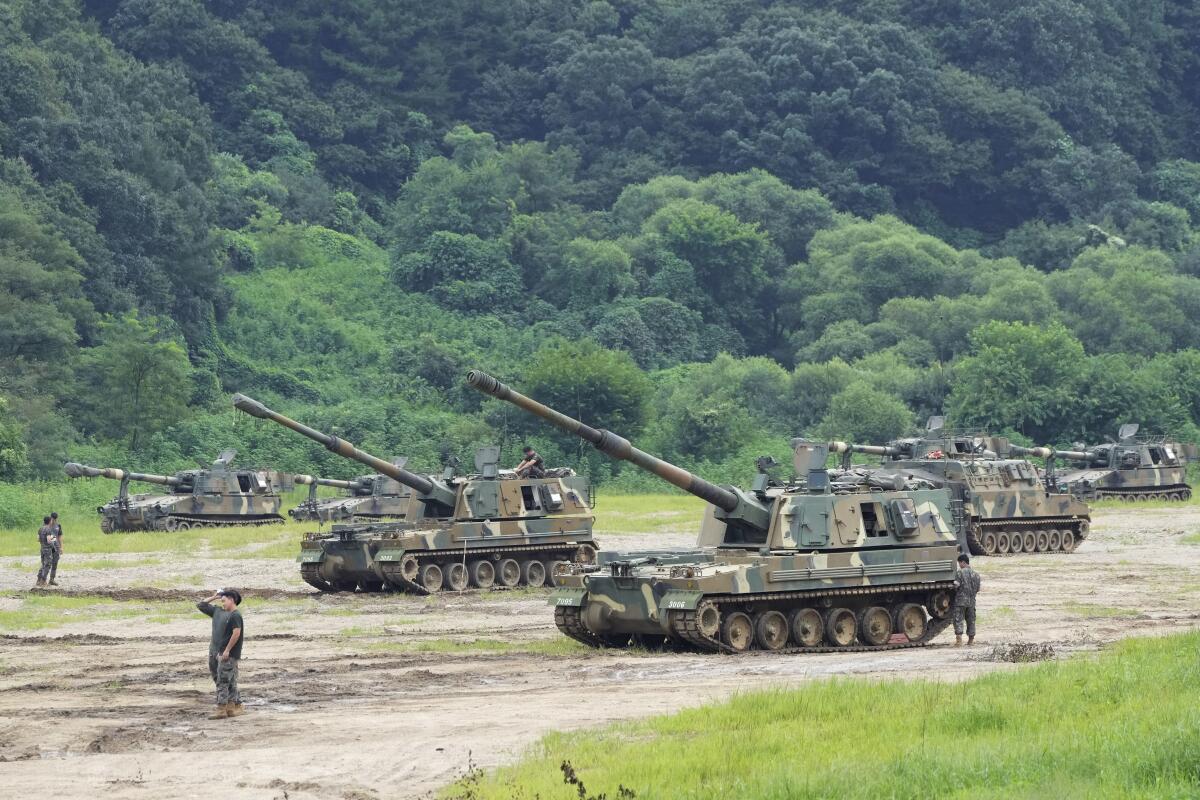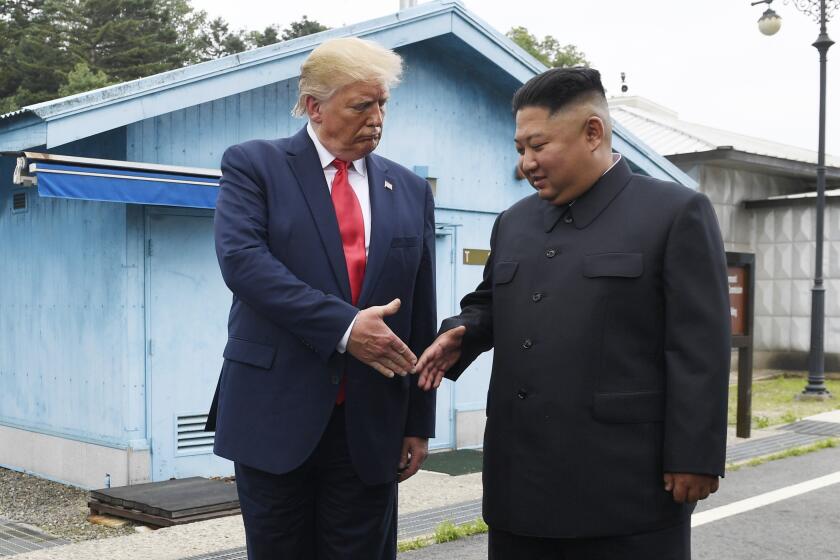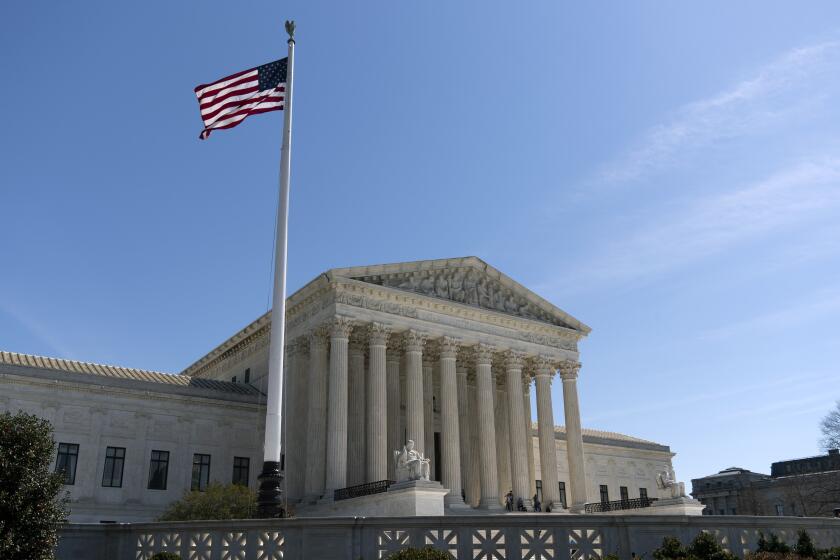U.S. and South Korea begin their biggest joint military exercises in years

- Share via
SEOUL — The U.S. and South Korea began their biggest combined military training in years Monday as they heighten their defense posture against the growing North Korean nuclear threat.
The drills could draw an angry response from Pyongyang, which has dialed up its weapons-testing activity to a record pace this year while repeatedly threatening conflicts with Seoul and Washington amid a prolonged stalemate in diplomacy.
The Ulchi Freedom Shield exercises will continue through Sept. 1 in South Korea and include field exercises involving aircraft, warships, tanks and potentially tens of thousands of troops.
While Washington and Seoul describe their exercises as defensive, North Korea portrays them as invasion rehearsals and has used them to justify its nuclear weapons and missiles development.
Ulchi Freedom Shield, which started alongside a four-day South Korean civil defense training program led by government employees, will reportedly include exercises simulating joint attacks, front-line reinforcements of arms and fuel, and removals of weapons of mass destruction.
The allies will also train for drone attacks and other new developments in warfare that emerged during Russia’s war on Ukraine and practice joint military-civilian responses to attacks on seaports, airports and major industrial facilities such as semiconductor factories.
Trump’s ‘fire and fury’ strategy didn’t work, but will Biden’s? Intelligence officials worry Kim is up to something, especially as Biden visits South Korea this week.
The U.S. and South Korea in past years had canceled some of their regular drills and downsized others to computer simulations to create space for the Trump administration’s diplomacy with North Korea and because of COVID-19 concerns.
Tensions have grown since the collapse of the second meeting between former President Trump and North Korean leader Kim Jong Un in early 2019. The U.S. rejected North Korean demands for a major rollback of crippling sanctions in exchange for dismantlement of an aging nuclear complex, which would have amounted to a partial surrender of the North’s nuclear capabilities. Kim has since vowed to bolster his nuclear deterrent in the face of “gangster-like” U.S. pressure.
South Korea’s military has not revealed the number of South Korean and U.S. troops participating in Ulchi Freedom Shield, but has portrayed the training as a message of strength. Seoul’s Defense Ministry said last week that Ulchi Freedom Shield “normalizes” large-scale training and field exercises between the allies to help bolster their alliance and strengthen their defense posture against the evolving North Korean threat.
Before being shelved or downsized, the U.S. and South Korea held major joint exercises every spring and summer.
North Korean leader Kim Jong Un warned he’s ready to use his nuclear weapons in potential military conflicts with the United States and South Korea.
The spring exercises had included live-fire drills involving a broad range of land, air and sea assets and usually involved around 10,000 American and 200,000 Korean troops. Tens of thousands of allied troops participated in the summertime drills, which mainly consisted of computer simulations to hone joint decision-making and planning, although South Korea’s military has emphasized the revival of field training this year.
The drills follow North Korea’s dismissal last week of South Korean President Yoon Suk-yeol’s proposal of economic benefits in exchange for de-nuclearization steps. Pyongyang accuses Seoul of recycling proposals that it has long rejected.
Kim Yo Jong, the increasingly powerful sister of North Korean leader Kim Jong Un, ridiculed U.S.-South Korean military capabilities for monitoring the North’s missile activity, insisting that the South misread the launch site of the North’s latest missile tests Wednesday, hours before Yoon used a news conference to urge Pyongyang to return to diplomacy.
Last week’s launches of two suspected cruise missiles extended a record pace in North Korean missile-testing in 2022, which has involved more than 30 ballistic launches, including the country’s first demonstrations of intercontinental ballistic missiles in nearly five years.
News Alerts
Get breaking news, investigations, analysis and more signature journalism from the Los Angeles Times in your inbox.
You may occasionally receive promotional content from the Los Angeles Times.
North Korea’s heightened testing activity underscores its dual intent to advance its arsenal and force the U.S. to accept the idea of the North as a nuclear power so that it can negotiate economic and security concessions from a position of strength, experts say.
Kim Jong Un could up the ante soon as there are indications that the North is preparing to conduct its first nuclear test since September 2017, when it claimed to have developed a thermonuclear weapon to fit onto its ICBMs.
More to Read
Sign up for Essential California
The most important California stories and recommendations in your inbox every morning.
You may occasionally receive promotional content from the Los Angeles Times.















